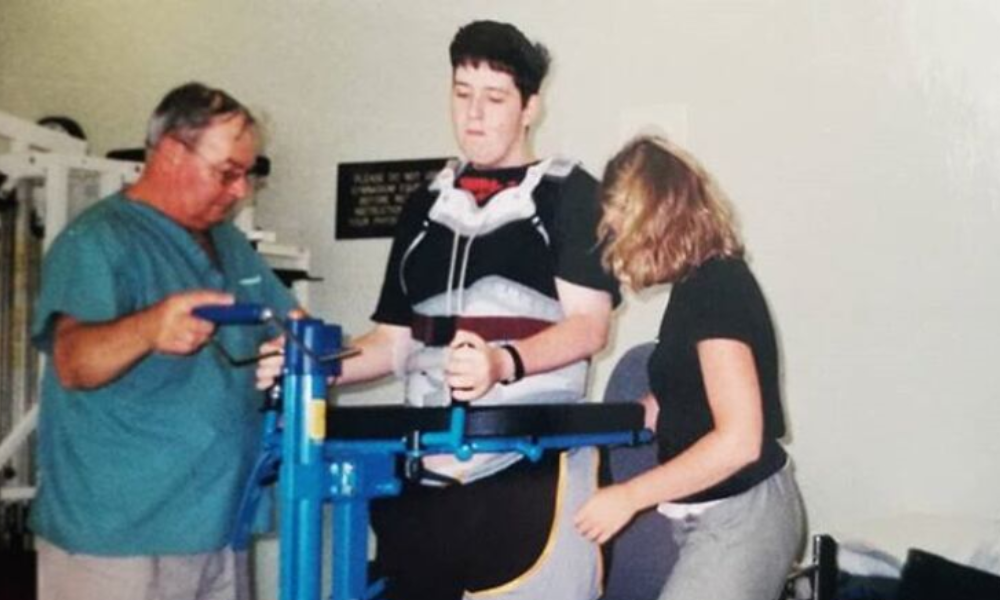How artificial intelligence is transforming safety communication

"The single biggest problem in communication is the illusion that it has taken place" - George Bernard Shaw. This observation is particularly relevant to toolbox talks, where effective communication can make all the difference.
Importance of toolbox talks
Toolbox talks are fundamental to setting the tone for safety before work starts. These short, focused conversations are more than just meetings. They align the crew around the tasks of the day, identify hazards, assess risks, and confirm the necessary controls to keep people safe. Toolbox talks promote safety culture, increase hazard awareness, and encourage active engagement.
Effective toolbox talks, however, are far from commonplace. According to a 2019 study in Safety Science, about 40% of safety briefings fail due to various reasons, ranging from inadequate skills and experience to insufficient planning and even background noise. Without the right design and focus, toolbox talks can become uninspiring or even counterproductive. Instead of engaging and aligning the crew, they may become tick-the-box exercises conducted because 'it's required.'
One example was a cement quarry where this misalignment was painfully evident. The supervisor read a piece of paper while the workers stood yawning and barely paying attention. There was no discussion, no interaction, and no effort to connect to the workers' tasks. What could have been a valuable opportunity to protect people became a waste of time. Worse still, a poorly executed toolbox talk can increase the risk of incidents and injuries by failing to create awareness in workers of critical safety measures.
At their best, toolbox talks can be impactful. As a shining example, a supervisor at a construction site created a collaborative and engaging environment. He started by explaining the day's tasks and tied them to broader safety goals. He immediately made the discussion purposeful. To set the tone, he shared a vivid story about a worker who suffered a hand injury while rushing to use improperly stored tools. He highlighted the importance of organization and planning. He brought the risks to life in a way that was relatable and memorable. He asked open-ended questions like, "What hazards have you noticed recently?" and "How can we address these risks together?" This encouraged active participation, with team members sharing experiences and brainstorming solutions. By the end of the session, the crew wasn't just informed; they were engaged and committed to looking out for one another. This supervisor turned what could have been a routine meeting into a meaningful and impactful conversation.
By intentionally designing toolbox talks to be engaging, relevant, and dynamic, organizations can turn these meetings into high-value events.
Today, with the advent of generative AI tools, organizations have a powerful new way to achieve this transformation.
Why using AI for toolbox talks is smart and effective
By leveraging AI tools like ChatGPT and Microsoft Copilot, supervisors and safety professionals can streamline and leverage the process of creating engaging and effective toolbox talks. These tools can analyze past incidents and near-miss data to uncover valuable insights, suggest relevant topics, and generate well-structured outlines that enhance clarity and impact. As noted in Dr. Sidney Dekker's "Safety Differently" (2014), "Safety is not about avoiding failure, it is about enabling success." AI can help enable this success by crafting compelling stories, providing illustrative examples, and formulating open-ended questions that drive meaningful discussion.
For example, you can ask ChatGPT to generate a simple infographic or chart using DALL·E, its integrated image-generation tool, to visually reinforce key safety messages. It can help design interactive exercises and thought-provoking discussion, while also supporting content development, scenario generation, engagement design, and performance analysis. When guided by individuals who know their teams, operations, and workplace realities best, these AI capabilities can produce toolbox talks that truly resonate and drive action.
The best part? AI is easier to use than you think and more powerful than you can imagine. With just a little experimentation, safety professionals and leaders can unlock new levels of creativity and impact, transforming toolbox talks into meaningful, collaborative, and effective discussions.
How AI can help in creating, delivering, and analyzing toolbox talks
Content creation with AI is straightforward. While AI-generated content often faces criticism for being uninspiring or formulaic, these issues arise when users rely on AI without proper direction. The key to success lies in using AI intelligently and working collaboratively with it to create content.
Users can quickly generate well-structured toolbox talks tailored to specific scenarios by clearly defining requirements. By feeding AI instructions to use real-life examples from your experiences or to generate them from industry-specific case studies and data, AI can create outstanding toolbox talks that are relevant and relatable to an audience.
In terms of continuous improvement, one standout capability of AI is its ability to perform post-toolbox analysis. AI can assess your delivery, as well as identify peak engagement moments and interaction opportunities. Unlike human reviewers who might hold back criticism or let personal relationships influence their feedback, AI provides straightforward, unbiased insights focused purely on effectiveness. This objective feedback becomes valuable for anyone looking to enhance their presentation skills.
Practical techniques for maximizing AI effectiveness
Using AI effectively requires more than inputting a basic request and accepting the first result. To maximize AI's potential, users need to provide it with structure, context, and clear direction while iterating on its output to refine the final result. Here are practical techniques for making the most of AI when creating toolbox talks:
Establish the AI persona
One of the most effective ways to get high-quality results is to define the role of AI before engaging with it. AI-generated content can vary widely depending on prompts, and setting a specific persona helps it generate quality responses.
A prompt of "Give me a toolbox talk on fall protection," will yield a poor result. A better prompt includes a persona as follows, "You are an experienced safety trainer specializing in construction site safety. Your task is to create an engaging and interactive 15-minute toolbox talk on fall protection, using real-life examples, open-ended questions, and interactive discussion prompts."
Ground AI in your context
The key to getting relevant content is grounding the AI in your own materials and experiences. Through a process called Retrieval Augmented Generation (RAG), you can feed AI your organization's documents, past toolbox talks, incident reports, and personal experiences, such as your own stories and examples. Simply upload these documents or share the information with the AI via its input field.
When AI has access to your content, rather than just its general knowledge, it can create toolbox talks that reflect your workplace reality and organizational voice. This makes the output directly applicable to your specific needs.
Clearly define the task
AI performs best when it understands your needs clearly. Instead of asking "Create a toolbox talk on fire safety," a better prompt is "Create a toolbox talk on fire safety for an industrial manufacturing site, focusing on emergency response protocols, proper fire extinguisher use, and real-life case studies of fire incidents."
The more detailed and specific the request, the more useful the output.
Specify the desired output format
Not all toolbox talks need to be structured the same way. You might prefer bullet points for quick reference, a full script for reading, or an interactive discussion guide. AI is able to do this if you ask for it. Research from the National Safety Council (2020) shows that varied presentation formats can increase retention rates by up to 40% compared to standard approaches.
Iterate and refine
The first response AI generates is rarely the best. Refinement through iteration helps improve accuracy and engagement. Consider this workflow:
- Generate an initial toolbox talk draft through back-and-forth interaction with the AI.
- Review the content and identify areas that still need improvement.
- Ask AI to modify sections, make them more interactive, or simplify complex concepts.
- Finalize the document with a human touch.
Know when to start fresh
When the AI's output moves away from your objectives, despite revisions, don't hesitate to start fresh. Simply tell the AI "Let's start over" and provide clear, renewed direction. This is often more efficient than trying to steer an off-course direction back on track. Like a GPS recalculating your route, sometimes the fastest way to your destination is to begin again with clear instructions.
Analyze the talk
AI can provide valuable feedback on your toolbox talk delivery by analyzing survey data or recordings. Upload the data or a recording of your talk (with appropriate permissions), and ask the AI to assess elements like pace, tone, engagement patterns, and interaction quality.
Final steps: Bringing it all together
To generate an excellent toolbox talk with AI, follow these steps:
- Upload reference materials
Provide AI with company safety documents, past toolbox talks, or incident reports. You can do this by clicking on the clip icon in ChatGPT, for instance, and uploading your files.
- Specify your requirements and use a well-crafted prompt
- Clearly define the persona, topic, audience, meeting duration, and engagement style (e.g., interactive discussion, storytelling, hands-on activities, or formal instruction).
- Use a structured prompt to ensure AI generates relevant and actionable content.
Example prompt:
"You are a workplace safety expert preparing a 15-minute toolbox talk on trench safety for a team of construction workers. Include:
- A real-life incident demonstrating the risks of trench collapses
- Key hazards associated with trench work and how to mitigate them
- Discussion questions to engage workers in identifying hazards in their own worksite
- A brief interactive activity that reinforces the importance of proper trench protection
- Step-by-step instructions on proper trench stability assessment
- Behavioral imperatives for worker safety
- An evaluation component to assess engagement and understanding."
- Provide examples, stories, and free-form ideas
Give AI real-life examples, case studies, or let it generate hypothetical but relevant ones that resonate with your team's experience. Additionally, include free-form writing—your own ideas, key talking points, or specific wording—to provide context and shape the response, ensuring it reflects your voice rather than being purely AI-generated.
- Analyze the talk
Record your toolbox talk (with appropriate permissions) or utilize feedback surveys and use AI to analyze the data. Use these insights to enhance your presentation skills and improve future talks.
Conclusion
AI is revolutionizing the way we create and deliver toolbox talks, making them more engaging, relevant, and effective than ever before. It enhances communication by generating clear, structured content while ensuring safety discussions are tailored to the specific needs of the workforce.
By leveraging AI tools, you can streamline the creation process, develop thought-provoking discussion questions, introduce real-world scenarios that encourage participation and learning, and continuously improve the process through post-talk data analysis. AI helps transform toolbox talks from routine meetings into interactive experiences that deepen understanding and reinforce a strong safety culture.
As technology and workplaces continue to evolve, AI provides an opportunity to improve the way we approach safety, making it more impactful and action driven.
Coming Soon: In our next article, we'll explore how AI is transforming another crucial aspect of safety management: procedures. We'll dive into practical ways AI can help write, analyze, improve, update, and consult procedures while maintaining human oversight, expression, and expertise. Stay tuned to learn how to make your safety procedures more effective, current, and user-friendly.
References
Dekker, S. (2014). Safety Differently: Human Factors for a New Era (2nd ed.). CRC Press.
National Safety Council. (2020). Safety Training Effectiveness Study: The Impact of Delivery Methods on Worker Retention and Performance. Safety+Health Magazine, 201(2), 45-51.
Zhang, L., & Wang, H. (2019). Effectiveness of daily safety briefings in high-risk industrial settings: A longitudinal study. Safety Science, 112, 180-192.





